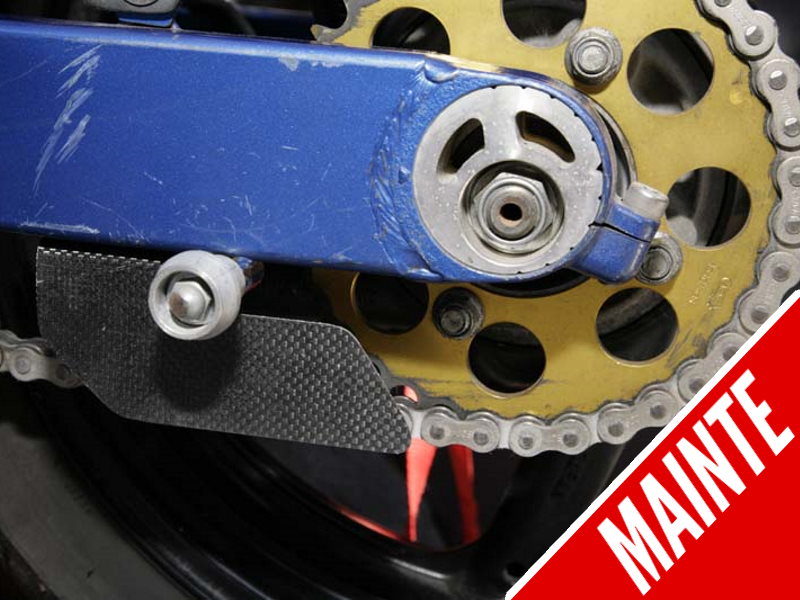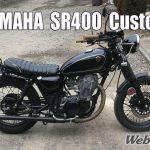If you are a San-Mecha who likes to make things by yourself and DIY, you have probably thought about making FRP parts at least once in the past, haven't you? Here, let's try our hand at making strong and lightweight dry carbon (or similar) DIY parts.
Utilizes ovens and impregnated carbon sheets


We tried our hand at drying carbon with a CV Junior high-temperature dryer made by Kerbeck. The real dry carbon drying system is said to have a vacuum function in the mold, sucking out excess resin as it dries. The CV Junior made by Kerbeck is like a two-story toaster oven for home use. For small parts, it is ideal as a dryer for baking paint.
It is a PSE-certified product with safety in mind. Mitsubishi Rayon's Pyrofil prepreg is a thin carbon cloth pre-impregnated with matrix resin (epoxy-based). Unfortunately, it is not a material that can be kept in stock due to its short shelf life even when stored at cold temperatures. This time, only one meter was purchased.
Shape molds are created by bending aluminum sheets


A simple and easy-to-make push die by bending an aluminum sheet made of A5052 material. The aim of this work was to insert carbon prepreg between the L-shaped angles and dry it at high temperatures. Will it turn out like dry carbon?
Cut materials with scissors without waste


Cut a piece of patterned paper to the size of the aluminum plate mold and write on it with a pen while imagining the drive chain protector. After cutting out the image with scissors, the shape is transferred to a prepreg backing. Since this is an expensive material, it was cut very tightly so as not to waste it. The outermost exposed side has a prominent carbon weave, so it was set with careful attention to the direction of the flow = weave. FRP fiberglass mats were inserted to increase thickness. This mat should also absorb the wasted resin.
Material is set in the aluminum plate mold while warming.



Just lightly warming the CF (carbon fiber) fiber with a handy heater will increase the softness, but at the same time, it will make it more sticky, so be careful not to overheat it. Lightly searing was enough. The flat-weave prepreg I purchased by mail order cost more than (approx.) 175 USD for a 1-meter square. Since it is very thin and only about 0.23mm per ply (I cut out 4 pieces from the pattern paper), I put FRP mats between the sheets to get thickness. The protective film was picked off with tweezers and peeled off from the base paper as well, and stuck to the aluminum plate mold.
Let's dry at high temperature in a toaster oven.




By searing it with a heater to increase the stickiness, the FRP mat could be staked so that it would adhere, but the amount of impregnating resin exuding was very small. I hope it does not peel off after this glass mat.
A total of five sheets (two prepreg sheets + one FRP mat + two prepreg sheets) were staked, and then forcibly clamped with an aluminum press die. It is okay if the tension is strong enough to be clipped with a large clip instead of a C-Clamp. The more elaborate the folding method of the aluminum mold plate, the more rigid the finished product should be.
POINT
Point 1 - Resin-impregnated carbon sheet to realize ideas
Point 2 - Let's use aluminum sheet material as a mold and dry it at a high temperature.
Point 3 - Let's practice molding work after complete conversion.
CV Junior, a compact high-temperature dryer handled by Kerbeck, is a popular product developed and marketed by Kerbeck for the purpose of enhancing its paint-related infrastructure. It is apparently a popular product not only among Sunday mechanics who love tinkering with motorcycles but also among women who enjoy handicrafts and ceramics. The atmosphere of the product is similar to that of a home electric oven, but instead of a quartz glass heat source, it uses a metal pipe as its heat source, and the size of the product, which looks like a two-story version of a typical home electric oven, is also a reason for its popularity.
This CV Junior is very useful as a dryer for baking paint, especially when painting brake calipers and master cylinders with gun coats. Incidentally, the CV Junior is used for baking and drying 4-stroke mini engines, because the cylinder head, covers, and even the crankcase can fit in the CV Junior.
This report is an attempt to see if it is possible to do something like dry carbon using CV Junior. To summarize the characteristics of the process by which real dry carbon is manufactured, dry carbon parts are thin and hard because the carbon is stretched over a mold, and excess resin is sucked out by a vacuum pump and forced to heat and dry. There are male and female molds, and in some cases, a sheet of plastic wrap is placed on the back of the product during vacuuming to create a vacuum and suck out excess resin.
In any case, the key point is to use no extra resin. It is said that the amount of resin greatly affects the weight of the product as well as its strength. Whether wet or dry molding, there is no difference in the process of solidifying and molding resin, but the greatest feature of dry carbon is that the excess resin is absorbed and the product is finished light and thin. The technology to make such dry carbon molding even lighter, thinner, and with a minimum amount of resin is the manufacturing method using prepreg fibers. Prepreg is a product in which carbon fiber is impregnated with hardening resin in advance. The carbon fiber impregnated with resin is placed between the molds and forced to dry, causing the impregnated resin to dissolve and blend into the mold. Since it is possible to create ultra-high-performance products without using extra resin, prepreg fibers are often used in the bodies of large passenger planes, racing machines, and the frames of competitive bicycles.
Here, I tried to imagine something like a drive chain protector in a mold of aluminum sheet, and the result was better than I had imagined. If we were to press it into the mold with about 8 to 10 plies and force dry it, it should end up as a very rigid part. Unfortunately, prepreg fiber is not a long-lasting material and the impregnating resin will harden spontaneously even at low temperatures. When practicing, it is a good idea to be thorough in all arrangements before preparing the material.



